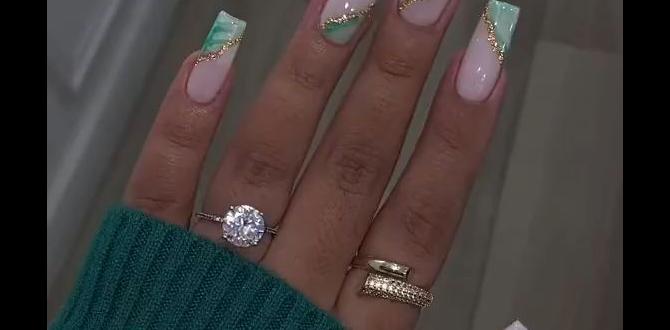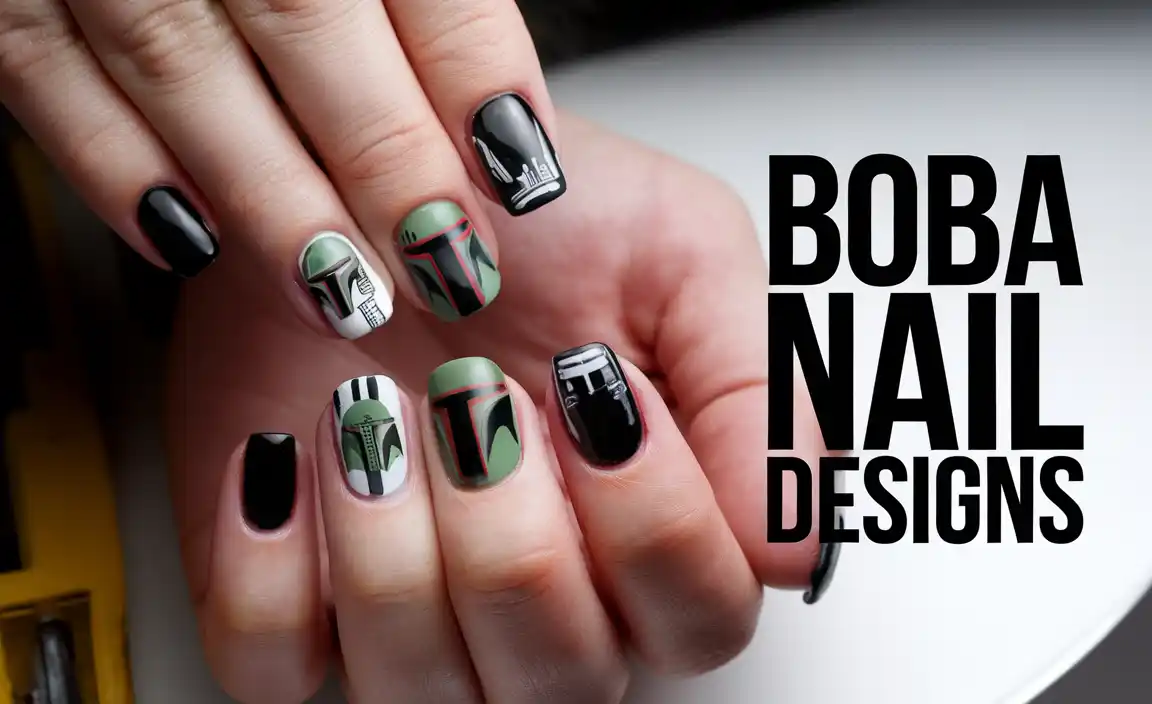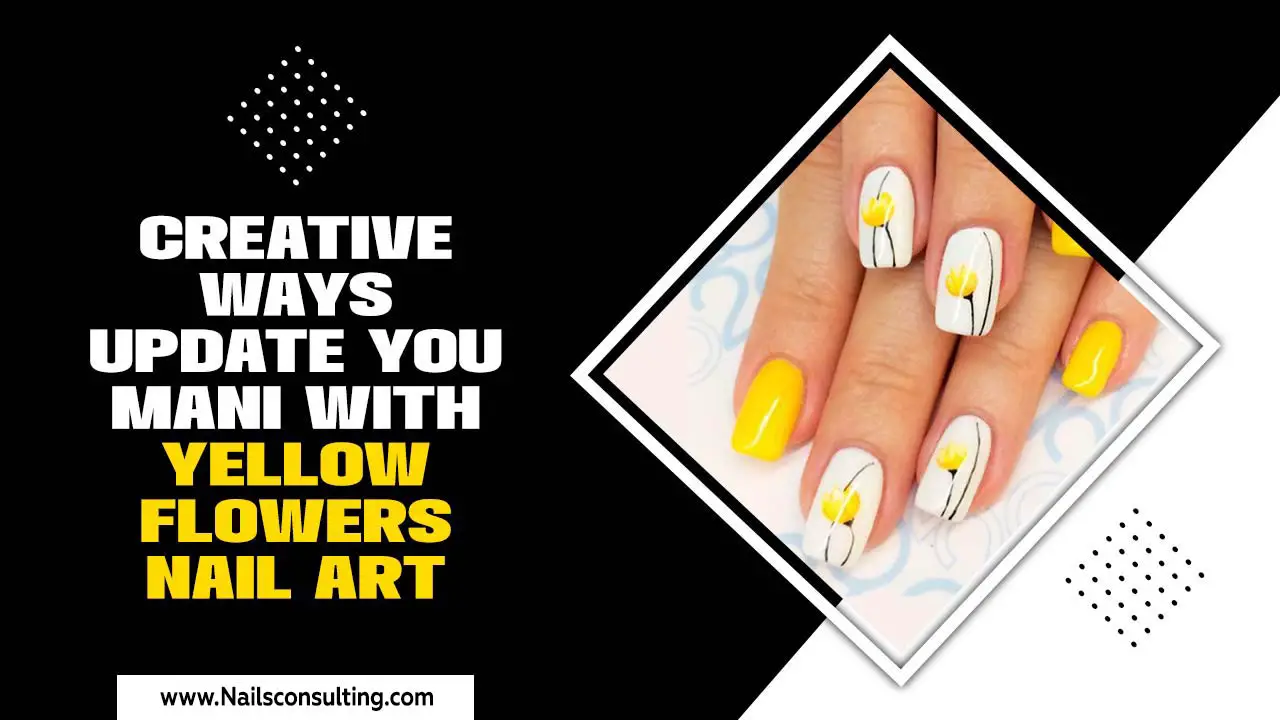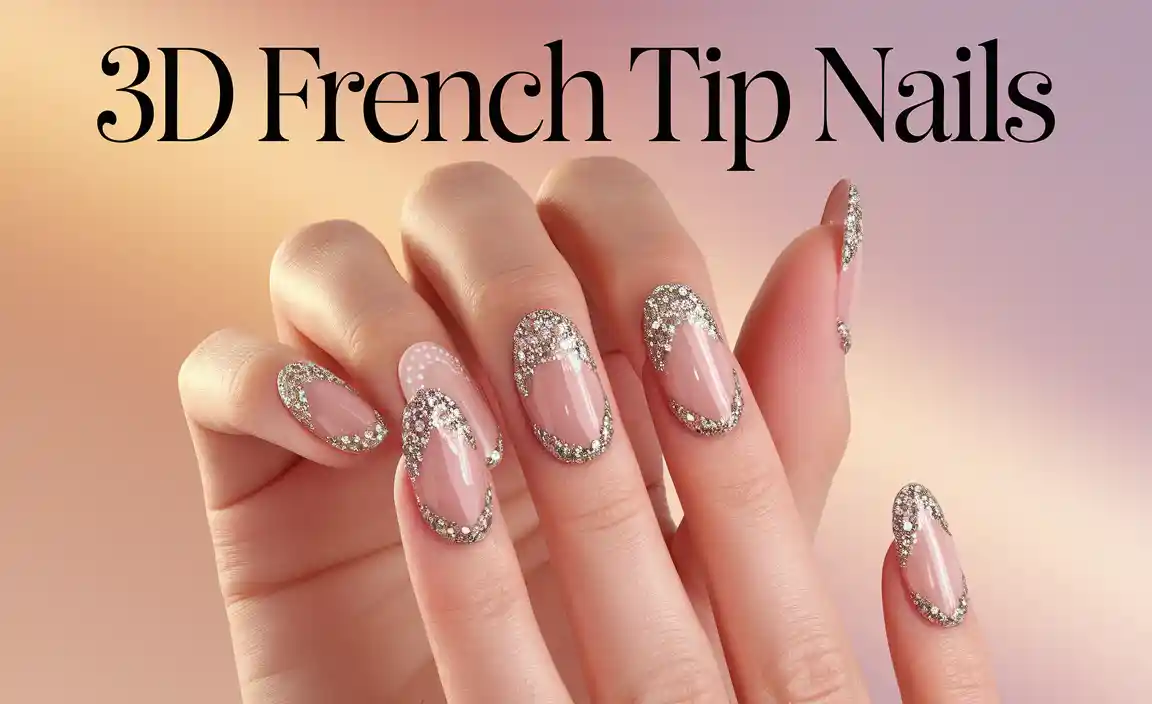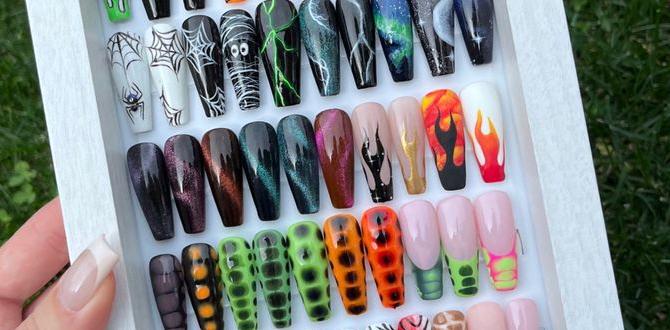Split color nail designs offer a chic, modern way to express your style. They involve dividing a nail into two or more distinct color sections, creating a bold, graphic look that’s surprisingly easy to achieve for beginners. This guide breaks down everything you need to know to create stunning split color manicures at home.
Welcome to Nailerguy! Ever scroll through nail art inspiration and see those eye-catching designs where a nail is split perfectly in two, or even three, vibrant colors? They look so professional and put-together, right? Maybe you’ve thought, “That looks way too complicated for me to do at home!” I get it! Sometimes nail art can feel a little intimidating. But what if I told you that split color nail designs are one of the easiest ways to elevate your manicure? They’re a fantastic starting point for anyone wanting to dip their toes into nail art. We’re going to walk through exactly how to create these gorgeous looks, step by step. Get ready to impress yourself with what your own fingertips can do!
—
What Exactly Are Split Color Nail Designs?
Split color nail designs, often referred to as half-and-half nails, color-block nails, or geometric split nails, are essentially manicures where a single nail is divided into two or more distinct color sections. Think of it like a clean, sharp line splitting your nail into two different shades, or even more intricate geometric patterns. This technique plays with contrast and color blocking, offering a sleek, modern aesthetic that’s incredibly versatile. It’s about taking a simple manicure and adding a playful, artistic twist that draws the eye.
Why Are They So Popular?
The popularity of split color nails stems from several key factors:
- Modern & Chic Aesthetic: They offer a sophisticated, contemporary vibe that pairs well with almost any outfit.
- Versatility: You can go bold with contrasting colors, soft with pastels, or even sophisticated with metallics and nudes.
- Beginner-Friendly: Compared to complex freehand art, achieving crisp lines for split nails is quite manageable with the right tools and techniques.
- Customizable: The possibilities for color combinations and placement are endless, allowing for true self-expression.
- High Impact, Low Effort: They deliver a striking look without requiring advanced artistic skills.
The Magic of Color Theory for Split Nails
Choosing the right colors can make or break your split color design. Don’t worry, we’re not talking about complex color theory here, just some fun tips! Think about color families:
- Contrasting Colors: Like blue and orange, or purple and yellow. These create a dramatic, eye-catching effect.
- Analogous Colors: Colors next to each other on the color wheel, such as blue and green, or pink and purple. These create a harmonious, blended look.
- Monochromatic Shades: Different shades of the same color, like light pink and deep fuchsia. Elegant and subtle.
- Neutrals with an Accent: A classic nude or white paired with a bright pop of color. This is a safe and stylish bet for beginners.
A great resource for exploring color relationships is ColorHexa’s color harmony tool. It can help you find complementary, analogous, and triadic color schemes that will look amazing on your nails.
Essential Tools for Your Split Color Manicure
Before we dive into the steps, let’s gather your nail art ammunition! You probably have most of these at home already.
What You’ll Need:
- Base Coat: To protect your natural nails and help polish adhere better.
- Top Coat: To seal your design, add shine, and prolong your manicure.
- Nail Polish Colors: Your chosen shades for the split design.
- Small Detail Brush or Striper Brush: For crisp lines. A fine-tipped brush is key!
- Squeeze Bottle with Fine Tip (Optional but Recommended): For precise application of your second color.
- Liquid Latex or Barrier Cream (Optional but Highly Recommended): To protect your skin from polish and make cleanup a breeze.
- Nail Polish Remover: For any little oopsies.
- Cotton Pads or Lint-Free Wipes: For cleaning brushes and removing excess polish.
- Clean-Up Brush: A small, stiff brush (like an old eyeliner brush) dipped in remover for perfect edges.
- Your favorite nail file and cuticle pusher.
Let’s talk about a few of these in more detail:
The Line Makers: Brushes and Bottles
When it comes to creating those sharp division lines, fine-tipped tools are your best friends. A good detail brush has very fine bristles that allow you to control the polish placement with precision. Even better, if you can find a small squeeze bottle with a fine tip (often used for craft glues), you can pour a small amount of your second polish into it. This turns your polish into a more controllable applicator, perfect for drawing clean lines. You can often find these craft bottles on Amazon that work wonderfully for nail art.
Skin Protection: Liquid Latex or Barrier Cream
This is a game-changer for beginners! Applying liquid latex or a barrier cream (like the popular Pueen Latex Peel Off Cuticle Guard) around your nail beds before you start will create a protective barrier. Once your manicure is complete, you simply peel off the latex, taking any stray polish with it. This means no more tedious cleanup with cotton swabs and corrector pens! It genuinely makes achieving clean lines so much less stressful.
Step-by-Step: How to Create Split Color Nail Designs
Ready to create some magic? Let’s get started. We’ll cover two popular variations: the classic half-and-half and a diagonal split. The principles are the same, just the line orientation changes!
1. Preparation is Key!
- Start with clean, dry nails. Push back your cuticles and gently file your nails into your desired shape.
- Apply a thin layer of your favorite base coat. Let it dry completely. This protects your nails and provides a smooth canvas.
2. Apply Your First Color
- Choose one of your split colors. Paint the entire nail with this color.
- Apply two thin coats for even coverage, allowing each coat to dry thoroughly between applications.
- If you’re using liquid latex or barrier cream, now is the time to apply it around the cuticle area and sidewalls of your nail.
3. Creating the Split Line
This is where the magic happens! We’ll use a fine-tipped brush for precision.
- Dip your detail brush into your second polish color. Wipe off any excess polish on a piece of paper or lint-free wipe so you have a controlled amount of polish on the brush.
- For a Half-and-Half Split: Imagine a perfectly straight line down the center of your nail, either vertically or horizontally. Carefully paint this line from one edge of your nail to the other, ensuring it’s as straight and neat as possible. Don’t worry if it’s not absolutely perfect; we can clean it up.
- For a Diagonal Split: Paint a diagonal line across your nail, from one corner to another. Again, aim for a smooth, straight line.
- As you paint the line, you’ll essentially be defining the edge where your first color will meet your second. You can make the line as thick or as thin as you like.
4. Applying the Second Color
Now, let’s fill in the other side of your nail.
- Using your detail brush or a squeeze bottle with a fine tip, carefully apply your second color right up to the line you just created.
- Work slowly and deliberately. It’s better to take your time and build up the color rather than trying to do it all in one go.
- Ensure the second color meets the line cleanly.
5. Cleaning Up for Perfection
This step is crucial for that professional, polished look.
- If you used liquid latex, gently peel it away now. Any polish that got onto the latex will come right off with it!
- If you didn’t use latex, grab your clean-up brush. Dip the tip into nail polish remover, then carefully trace the edges of your design to remove any stray polish. Use a light touch!
- Dip a clean section of your brush or a fresh brush into remover as needed to keep your lines sharp.
6. Sealing the Deal with Top Coat
- Once your colors are completely dry, apply a generous layer of your favorite top coat.
- Be sure to cap the free edge of your nail by running the brush along the tip. This helps prevent chipping and keeps your design locked in place.
- Let your top coat dry completely.
Tips for Different Split Nail Styles
The basic technique can be adapted for a variety of stunning looks. Here are a few ideas to get your creative juices flowing:
The Geometric Split
This is where you get really creative with your lines. Instead of a single dividing line, think triangles, squares, or even chevron patterns. You can achieve this by:
- Applying your first color and letting it dry completely.
- Using striping tape (thin, flexible tape designed for nail art) to create your geometric shapes. Press the tape down firmly to ensure a clean line.
- Paint over the tape with your second color.
- Carefully remove the tape while the polish is still slightly wet.
- Let dry and apply top coat.
Striping tape is an inexpensive and highly effective tool for creating super-sharp geometric lines. You can find it at most beauty supply stores or online retailers that sell nail art supplies.
The Reverse Half-Moon (or Cuticle Split)
This trend gives a nod to the classic half-moon manicure but is applied at the cuticle line. It’s essentially a vertical split that starts at the cuticle and goes up the nail.
- Apply your first color to the main part of the nail.
- Use your detail brush to paint the “moon” or crescent shape at the cuticle in your second color, connecting it to the first color on the nail surface.
- A steady hand and a good clean-up brush are your best friends here.
The Three-Color Split
Want even more drama? Why not three colors? This can be achieved by painting your first color, adding a line with your second, cleaning up, and then adding a third color to the remaining section, again defining the line between the second and third colors. It’s a bit more advanced but creates an incredible effect!
Color Combinations to Try
Here are some ideas to get you inspired:
| Style | Color Palette Idea 1 | Color Palette Idea 2 | Color Palette Idea 3 |
|---|---|---|---|
| Classic Half & Half | Black & White | Navy Blue & Gold Metallic | Coral & Teal |
| Diagonal Split | Hot Pink & Baby Pink | Emerald Green & Olive Green | Silver Metallic & Deep Purple |
| Geometric | Nude & Rose Gold Accents | Mustard Yellow & Muted Grey | Two shades of Blue with a White line |
| Three Color | Light Blue, Medium Blue, Dark Blue | Red, White, Blue (Americana theme) | Pastel Pink, Lavender, Mint Green |
Troubleshooting Common Issues
Even with the best intentions, a few things can go a bit awry. Let’s tackle them!
Wavy or Uneven Lines
The Fix: This usually happens from applying too much polish on your brush or not having a steady hand.
- Tip: Always wipe excess polish from your brush. Practice drawing lines on a piece of paper first. For a super-clean line, consider using striping tape. If the line is already there and it’s wavy, use your clean-up brush dipped in remover to gently “erase” the imperfections and redefine the line.
Colors Bleeding Into Each Other
The Fix: This typically occurs if the first color isn’t fully dry before you apply the second, or if you’re using too much polish on your brush.
- Tip: Patience is key! Ensure your first color is completely dry. If you’re using liquid latex, it helps create a seal. If not, it’s all about careful application of the second color right up to the line. Resist the urge to rush!
Polish on the Skin
The Fix: This is where liquid latex or barrier cream shines!
- Tip: If you didn’t use protection, grab your clean-up brush. Dip it in nail polish remover, wipe off the excess, and carefully trace around your nail to remove stray polish. A little goes a long way.
Chipping Along the Line
The Fix: This can happen if the line isn’t properly sealed or if the polish layers are too thick.
- Tip: Ensure your top coat is applied smoothly and caps the free edge of your nail. If you notice a slight chip, you might be able to very carefully touch it up with your detail brush and a tiny bit of polish, then re-apply a thin layer of top coat.
Maintaining Your Split Color Manicure
To keep your stunning split color nails looking fresh for as long as possible:
- Avoid Harsh Chemicals: Wear gloves when doing household chores, especially when using cleaning products, as they can break down the polish.
- Moisturize: Keep your hands and cuticles hydrated with a good cuticle oil or hand cream. Healthy cuticles make your whole manicure look better.
- Reapply Top Coat: Every few days, you can apply an extra thin layer of top coat to refresh the shine and reinforce the polish.
- Touch-Ups: If you notice a tiny chip, you can carefully touch it up with a tiny bit of polish and top coat.
Split Color Nail Designs: FAQ
Q1: Are split color nail designs difficult to do at home?
A1: Not at all! They are actually one of the easiest nail art designs to achieve. With a steady hand, a fine-tipped brush, and perhaps some liquid latex for protection, beginners can create beautiful split color looks.
Q2: What kind of nail polish should I use?
A2: Any regular nail polish will work! However, for the best results and crisp lines, you might prefer polishes with a good consistency – not too thick and not too watery. Gel polishes and their

